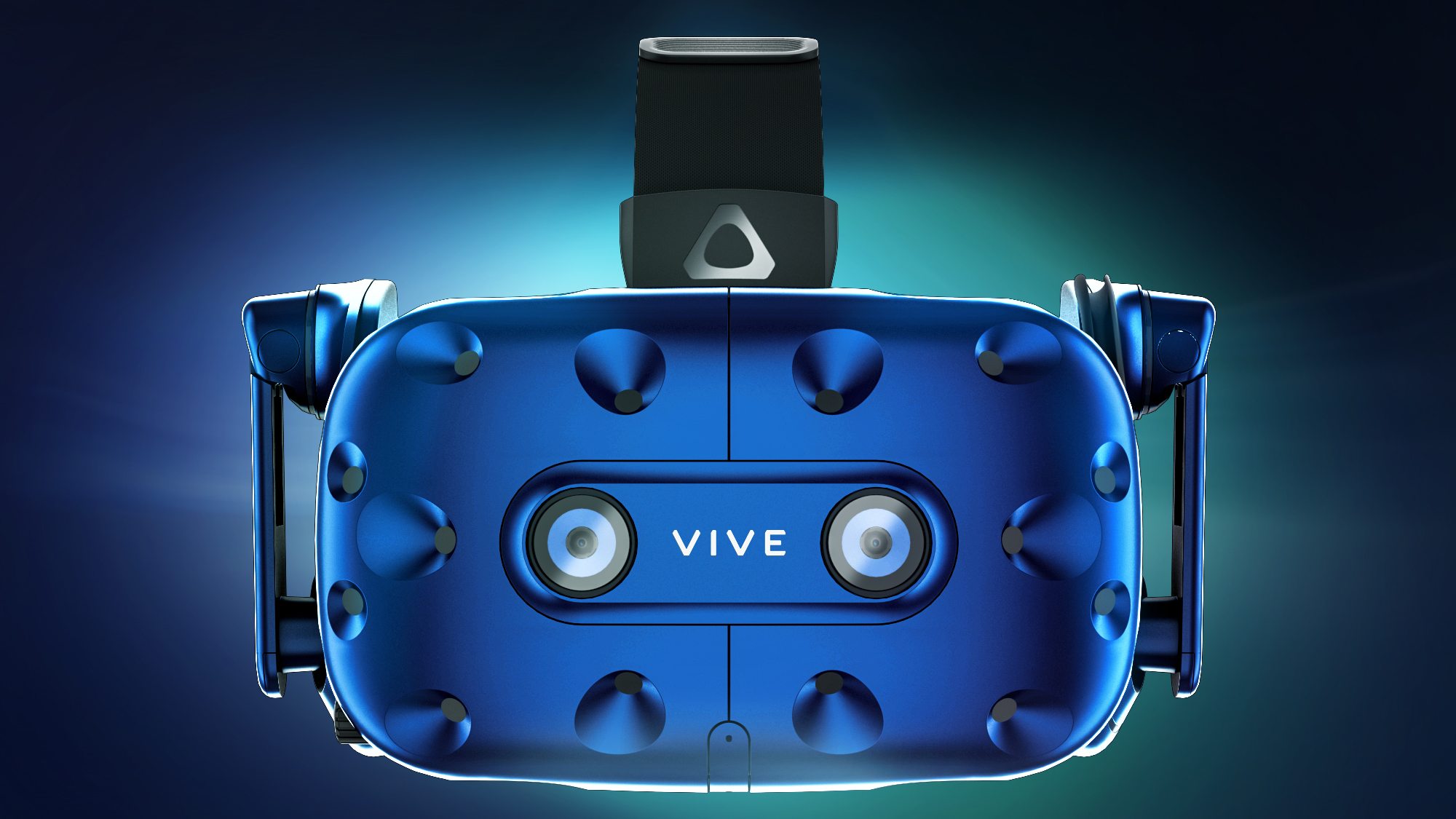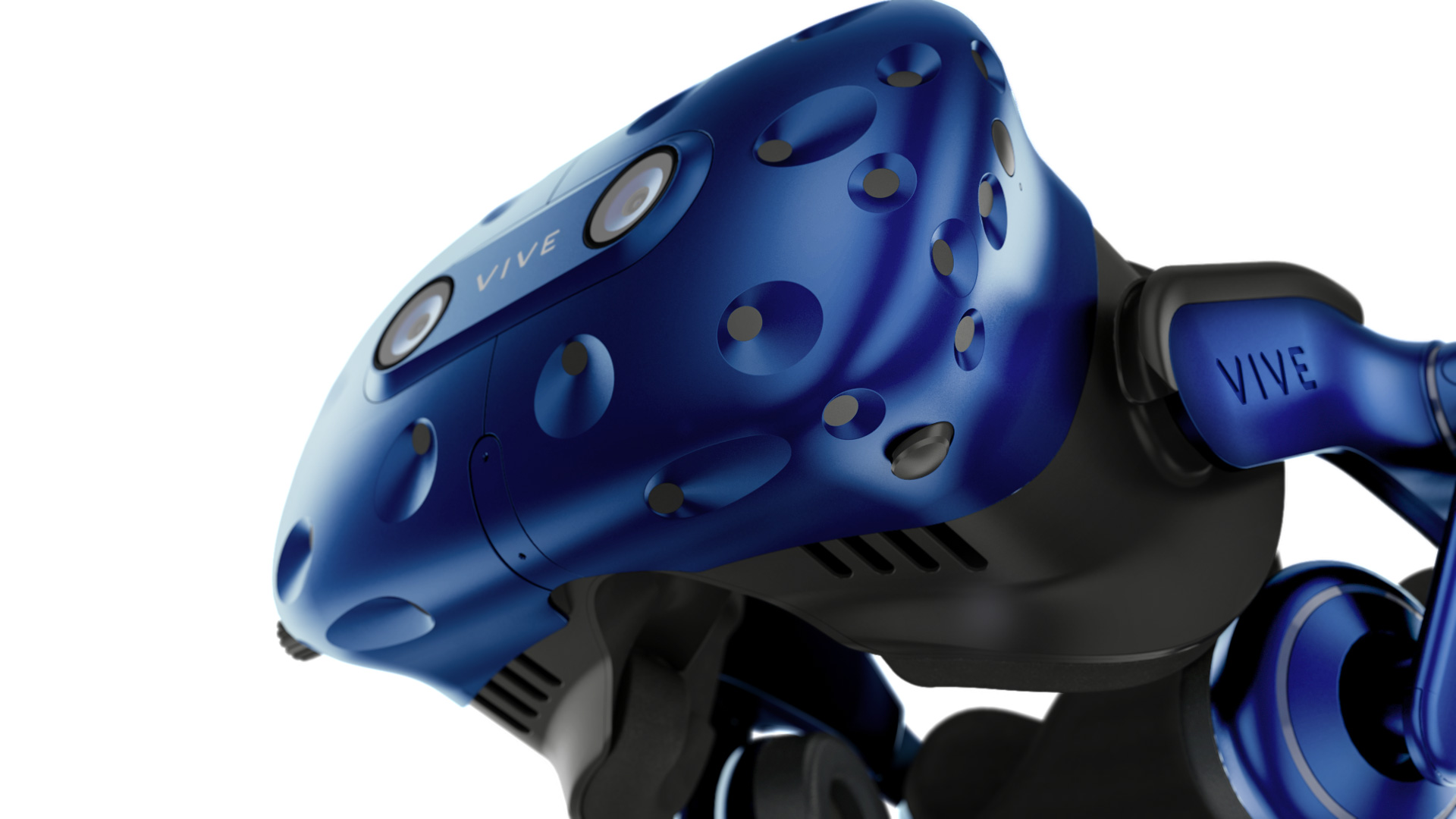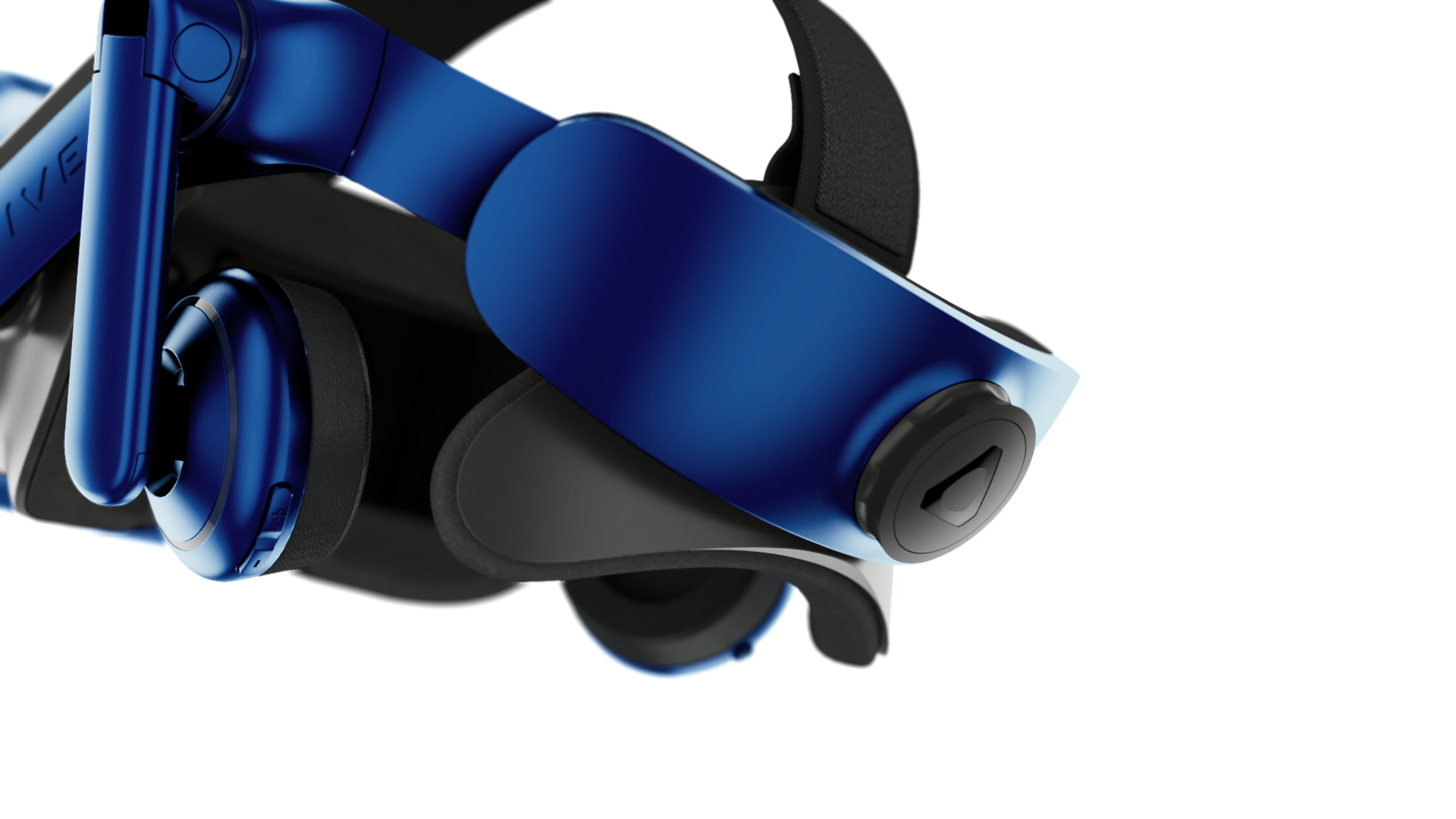HTC Secures VR Dominance With High-End Vive Pro Upgrade
LAS VEGAS, NV -- Today at CES 2018, HTC introduced the Vive Pro, which features updated display panels that produce a crisper, clearer image. It also offers support for Valve’s updated tracking system. There’s nothing wrong with the current Vive configuration. In fact, HTC plans to keep it around through 2018, but the two-year-old device is beginning to show its age. HTC is aware that the Vive is losing its grip on the VR market, and the company is ready with a new device to help it maintain its spot as a top-tier home VR solution provider.
Last week, HTC’s marketing team sent out a tweet that gave us a hint about a possible new HMD. The company posted an illustration of a Vive headset with the caption “New Year’s” in blurry text and “Resolution” in crisp text, which indicated that the company had something secret up its sleeve. We speculated that HTC could be preparing to announce Vive 2.0, and suggested that it may include a higher-resolution display, updated optics, Valve’s new Steam VR Tracking 2.0, wireless data transmission, and maybe eye-tracking sensors. Our expectations of HTC's announcement were somewhat overzealous, but the company did trot out a new HMD at its CES press event.
The original Vive HMD featured a pair of 1080 x 1200 90Hz LCD panels. At the time, rendering a 2160 x 1200 at 90 frames per second was a tall order for most graphics cards. These days, a mid-range GPU can handle that resolution reasonably well, and high-end GPUs have enough headroom to dabble with supersampling to improve the image quality even further.
Display technology has also improved in the last two years. When HTC introduced the Vive, the display panels in the headset were at the cutting edge of LCD design. No device on the market other than VR HMDs featured such high-resolution panels with that refresh rate and at that size. Today, the majority of VR HMDs offer higher resolution than the Vive and Rift. Microsoft’s Windows Mixed Reality HMDs, which can run on integrated graphics, boast at least 1440 x 1440 pixels per eye. And the resolution of HTC’s standalone Vive Focus HMD is even better than that.
When HTC created its first Vive headset, it turned to Samsung for the advanced display panels featured in the device. Samsung recently introduced a new OLED HMD display that offers 1440 x 1600 pixels and operates at 90Hz and above. Samsung uses the displays in its Odyssey Windows Mixed Reality HMD, and it provides the same panels to other OEMs. HTC didn't specify that the new panels are from Samsung, but the new Vive Pro features two OLED panels with the same resolution. We're not aware of any other 1440 x 1600 90Hz OLED displays for VR headsets, so we're pretty confident the Vive Pro features Samsung's new panels.
Surprisingly, HTC's new device doesn't include updated optics to complement the new displays (or, at least HTC didn't say so). We would have thought the higher resolution display would call for a new lens design. Valve even recently announced that it created custom lenses for “next-generation VR HMDs."
HTC didn’t discuss the minimum requirements for the Vive Pro, but the device’s high resolution will no doubt put additional strain on the graphics pipeline, and it will likely demand an incredible PC to operate. To put the change into perspective, the original HMD featured 2,590,000 pixels that must be updated 90 times per second. The new headset boasts 4,608,000 pixels to fill, which is a 78% increase. That’s a lot more work for the GPU.
Get Tom's Hardware's best news and in-depth reviews, straight to your inbox.
The Vive Pro also features updated tracking sensors. In mid-2017, Valve announced that the second generation of its Steam VR Tracking system was in development and would debut at the end of the year. Steam VR Tracking 2.0 would offer support for new base stations with a wider field of view. The new system also supports two extra base stations (for a total of four) and play areas as large as 10m x 10m. The new optical sensors for Steam VR Tracking 2.0 support the new base stations and the old base stations. The current Vive headset is not compatible with the upcoming base stations.
The Vive Pro also features an updated head strap and integrated headphones. Last year, HTC released the Deluxe Audio Head Strap upgrade for the original Vive, which featured rigid construction and integrated headphones, both of which were major improvements to the overall package. For the Vive Pro, HTC expanded on the improvements that it made with the Deluxe Audio Head Strap. HTC redesigned the shape of the strap to offer more adjustment range for the headphones, and it reworked the rear section of the headstrap to provide additional support. The new headphones are also of higher quality, with a built-in amplifier to provide a premium audio experience.
The front of the Vive Pro headset also features two cameras, that point straight forward, instead of the single downwards facing camera found on the current Vive. HTC did not say what thier function is.
HTC said that the Vive Pro would be available later this quarter as an upgrade kit for existing Vive owners. The new headset would also be available as a full kit, presumably with updated base stations, later this year. HTC didn’t announce the price of the headset, but the company said that "more information about pricing and availability would be available soon."
Kevin Carbotte is a contributing writer for Tom's Hardware who primarily covers VR and AR hardware. He has been writing for us for more than four years.
-
KD_Gaming Doubtful... the pimax 8k has even higher specs and was only $500.. headunit only. 800 with remotes and base stationsReply -
237841209 I'd imagine they'd try to make it around 600 to 700 dollars and lower the price of the original.Reply -
hdmark im kind of confused why they only matched the odyssey resolution. obviously the tracking is way better than the odyssey due to the cameras, but im a bit let down. I was expecting to regret buying my odyssey and want the vive 2 (and try to convince my fiance that having base stations in the living room wouldnt be so bad) but i'm actually still pretty happy i bought my odysseyReply -
quilciri Well, as they said in the article, those are apparently the highest resolution displays available for VR HMD's right now.Reply
I'm hoping the wireless adapter announced will be included in the Vive Pro and the upgrade package for existing Vive owners
-
hannibal Pimax 8 at 500 is only for kickstarters. Normal price is much higher.Reply
The old headset will remain as an ”cheap” option and this will come above it, so 1000$ or more is guite good ques. But this Also needs two 1080ti cards to run properly so not cheap in anyway. -
Kahless01 two 1080tis? they never really solved the frame pacing issues with sli and vr. dunno why its so hard. one card for one eye one card for the other.Reply -
cryoburner Reply20575300 said:im kind of confused why they only matched the odyssey resolution. obviously the tracking is way better than the odyssey due to the cameras, but im a bit let down. I was expecting to regret buying my odyssey and want the vive 2 (and try to convince my fiance that having base stations in the living room wouldnt be so bad) but i'm actually still pretty happy i bought my odyssey
Going higher wouldn't make much sense, given the performance and pricing of today's graphics hardware. Since there's nearly 80% more pixels compared to the original Vive, the minimum requirements are likely to rise to at least GTX 1070 level hardware. And due to the graphics card shortages that have been plaguing PC builders since early last summer, these GPUs are actually more expensive now than when they launched over a year and a half ago, shortly after the original Vive came out. Hopefully the pricing of graphics cards will come back down, but it's not looking good, as prices have been climbing again in recent weeks.
As for pricing of the Vive Pro, I expect the standard bundle to be no more than what the original Vive launched for. I'd say the original Vive is due for another price cut before long as well, since the Oculus Rift has been offering a very similar experience at a significantly lower price since the summer. While the Vive's $200 price premium was justifiable back when the headsets launched, due to the inclusion of motion controllers and room-scale that the Rift didn't have, now the Rift includes motion controllers at a $400 price point, and a comparable room-scale experience can be added with a third sensor for another $60. The Vive might still offer more precise tracking, but many consider the Rift and its touch controllers to have better ergonomics. A sub-$500 price could make the original Vive a lot more competitive again.
It could also be a good idea for them to release an updated version of the standard Vive, in addition to the Vive Pro. While the Vive Pro might appeal to those willing to spend $800 on a VR bundle, and another $500 on a graphics card, it won't do much to attract most others. Refreshing the existing Vive with support for the new sensors, along with other small refinements to things like ergonomics and lens quality would help keep it fresh, even if the resolution stays the same. -
quilciri Reply20575668 said:two 1080tis? they never really solved the frame pacing issues with sli and vr. dunno why its so hard. one card for one eye one card for the other.
This was *supposed* to be what happened under DX 12, even with normal monitors. The idea was you could even have two cards of different performance, even different manufacture (i.e. an AMD and an Nvidia card) work together. The API was supposed to evaluate the performance of each card and then assign portion of the screen to render to each based on that evaluation. None of that has materialized yet, though.


